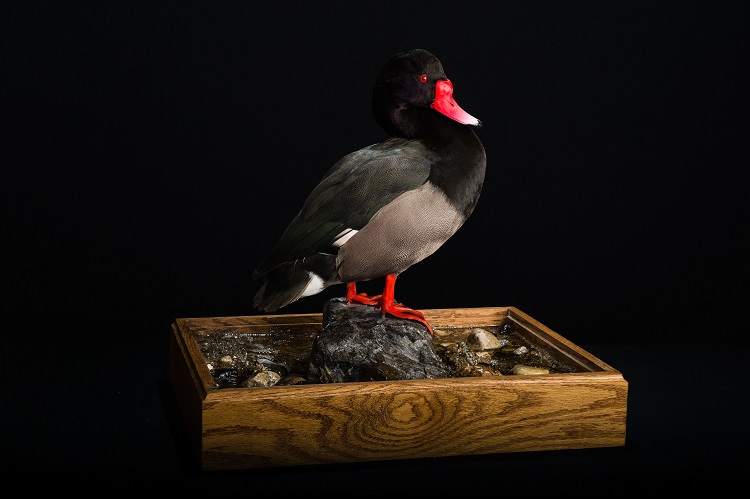
On a crisp January afternoon, Trish Freeman and John Carroll traveled to Everett "Buzz" Madson's home in Omaha where dozens of glass cases sat idle in a packed basement.
"We were astonished," said Freeman, professor in UNL's School of Natural Resources and head of the Biodiversity Laboratory of Zoology at the University of Nebraska State Museum.
The treasures behind the glass – long hidden from outsiders – were revealed.
"Immediately we were blown away," said Carroll, SNR director and professor. "They were absolutely beautiful."
The glass cases held taxidermied game birds from virtually every corner of the globe, from the prairies of Nebraska to the Andes of South America to the woodlands of equatorial Africa.
"(Madson's) basement was overflowing with ducks, geese, grouse, turkeys and quail," Freeman said.
In all, Madson's collection amounted to 163 individual game birds representing 103 species.
"Clearly, this collection was a force to be reckoned with," Freeman said. "I have spent nearly 50 years among museums and natural history collections both small and large. Never before have I seen birds so beautifully and thoughtfully arranged in such natural, graceful poses and, importantly, protected from dust and damage to the feathers."
Madson gifted his collection to the NU State Museum in honor of Paul Johnsgard, emeritus professor in the School of Biological Sciences, whom Madson had as a professor in zoology courses during his undergraduate years at UNL.
"Dr. Madson spent a lifetime collecting these specimens," Carroll said. "We believe it will provide opportunities for our students and visitors to see just a small bit of the diversity of birds, and maybe spark an interest in bird biology and conservation."
In March, one semi-trailer truck delivered the birds from Madson's Omaha home to Hardin Hall where they are currently on display.
The collection, now officially part of the NU State Museum’s Biodiversity Laboratory of Zoology, is on loan to the School of Natural Resources and is on public display throughout Hardin Hall.
"(Madson) has visited the building and I am not certain he had ever seen (the birds) displayed in a space as large as Hardin Hall," Freeman said. "Faculty, staff, students and visitors notice them, enjoy them and are excited and delighted by them. It is my sincere hope that (Madson), his family, friends and any who are interested in the natural world and its beauty will enjoy this wonderful gift to the university – it is a magnificent sight."
— Mekita Rivas, Natural Resources